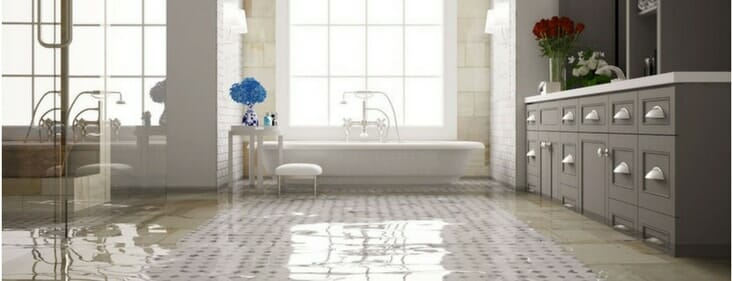Common Sources Of Water Damage in a Bathroom
Common Sources Of Water Damage in a Bathroom
Blog Article
We have stumbled on the article pertaining to Looking for Signs of Water Damage in the Bathroom down the page on the internet and reckoned it made good sense to relate it with you here.

The restroom is exceptionally at risk for moist accumulation as well as prospective water damage because of the regular use water in it. This write-up offers easy evaluation methods to assist finding water damages threats.
The constant use water in the bathroom makes it exceptionally vulnerable for moist accumulation and potential water damage. By examining it frequently, you can minimize water relevant problems.
The adhering to collection of assessments is simple to do as well as must be done as soon as in every 3 months in order to maintain your shower room healthy as well as to avoid prospective water damages caused by the bathtub, the shower, pipe joints and plumbing, sinks, cabinets, and also the commode
Do not forget executing these assessments as well as be extensive while doing them. Bear in mind that these easy examinations can conserve you a great deal of money by providing very early signs for water damages
Tub and Shower
The shower and bath tub need special focus and also upkeep. Inspect the tiles and also change if broken. Ensure that there is no missing cement in between the tiles. Inspect and also change broken caulking at joints where the wall surfaces fulfill the floor or the bathtub. Obstructed drains pipes and pipelines issues will prevent the bath tub from drying and might suggest serious troubles below the bathtub. Seek advice from an expert instantly to stop architectural damage. Take notice of discolorations or soft locations around the tub walls as they might indicate an inner leak.
Plumbing
Signs for water damage are difficult to spot given that a lot of pipes are mounted inside the walls.
Pay unique interest to floor covering as well as wall surfaces wetness and also spots as they may suggest an invisible plumbing trouble. Check dampness levels in adjacent rooms also.
Sinks and Cabinets
Sinks as well as cabinets are subjected to dampness as well as moisture everyday and also are frequently forgotten. Examine consistently under the sink and on the counter top over it. Repair any kind of drip in the trap as it may recommend drain issues. Look around the sink, sluggish draining pipelines may suggest an obstructed drain. Replace sink seals if they are fractured or loose.
The Bathroom
The commode is a susceptible water joint. Examine the water lines and look for leakages around the commode seat, in the hose pipe, and also under the water tank. If you find any indications of dampness on the flooring around the bathroom, look for leaks in the toilet rim and also tank seals.
Know that hanging toilet bowl antiperspirants increases the possibilities for obstructions.
TIPS TO PREVENT WATER DAMAGE IN THE BATHROOM
The average household uses approximately 80-100 gallons of water per person per day. For a family of 4, that's almost 2,500 gallons of water a week! The largest portion of this consumption comes from bathroom use. Flushing the toilet uses the most water, followed by taking a shower or bath. With that much water running through the home, water damage in the bathroom is bound to happen. Knowing how to spot signs of a water leak is essential to preventing long-term damage. This guide provides you with tips to reduce the impact of water damage on your bathroom.
CAUSES OF BATHROOM WATER DAMAGE
Pipe breaks are the most common cause of water damage we see in our daily jobs. The age of a pipe plays a large role in a pipe break as well as corrosion. Over time, the metal begins to break down, allowing water to escape. Frozen pipe breaks are also a concern in the winter months. Toilet overflows caused by paper products or children flushing inappropriate items. Degraded caulking around the toilet or bathtub can allow water seepage, sometimes behind the fixture, into the subfloor or walls. Condensation forms when the water in a pipe is cooler than the air temperature. Beads of water form on the exterior of the pipes, sometimes so much so that the water begins to drip and pool below. Sink or shower backups created by poor drainage. HOW TO PREVENT WATER DAMAGE IN YOUR BATHROOM
Inspect your toilet supply line for worn or frayed hoses and replace them as needed. Winterize your plumbing to prevent a frozen pipe break. Use vent fans to prevent condensation that can lead to mold growth. Routinely check and replace degraded caulking around your toilet or bathtub. Increase the temperature in your toilet tank and insulate your pipes during the warm summer months to keep condensation from forming. Use child safety locks on the toilets. Flush only toilet paper. "Flushable" wet wipes are actually not good for your plumbing system. Additionally, feminine hygiene products should not be flushed. Prevent water from escaping the tub or shower. Make sure shower curtains are in good condition. Inspect shower doors and replace the seal strip if necessary. Wipe up any water that accumulates on the floor and use bath mats. Water left to sit can cause damage to the tiles and flooring. Refrain from using bath products containing heavy oils to avoid a clogged drain.

As a reader on Looking for Signs of Water Damage in the Bathroom, I imagined sharing that excerpt was a good idea. Sharing is good. Helping people is fun. Thanks for going through it.
Visit Site Report this page